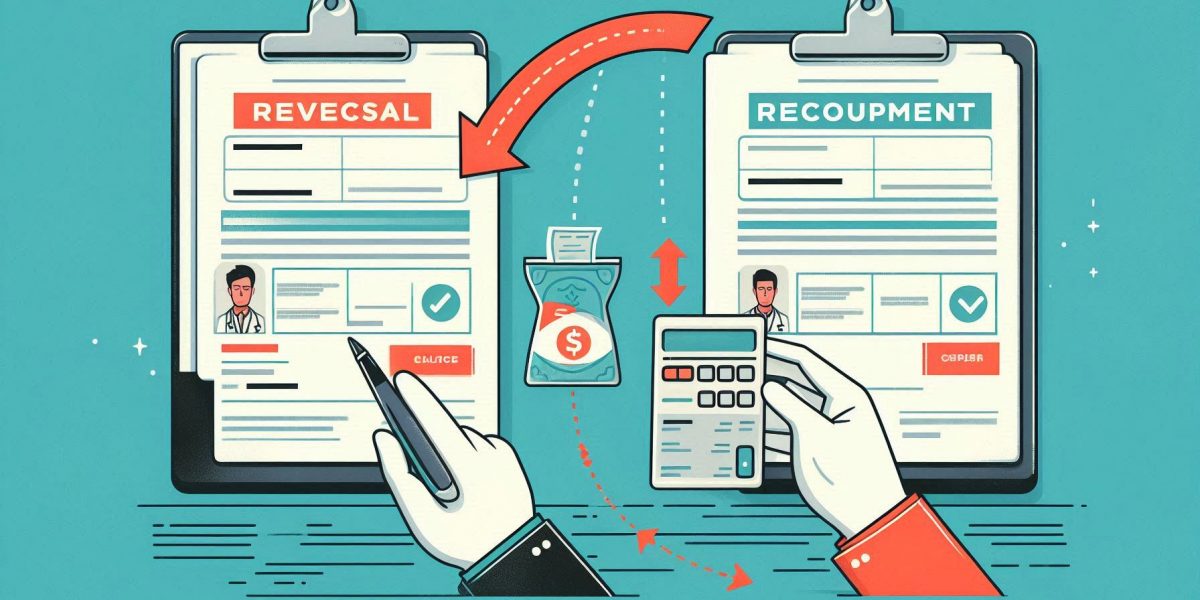Medical practices constantly struggle with claim denials, which deplete their resources and aggravate both staff and patients. The amount of money lost accumulates as time is lost on investigation and denial appeals. In this battle, “The Ultimate Claim Denial Prevention Checklist” is your covert weapon.
This checklist proactively prevents errors so that your personnel may concentrate on patient care. It serves as a guide, guaranteeing that claims are filed fully and precisely right away. This results in a notable increase in first-pass approval rates, which propels your practice’s money flow more quickly and reliably.
The entire process of submitting claims is streamlined by the checklist as well. Every stage is spelled out, delegating tasks and encouraging uniformity among employees. Errors are decreased, and overall efficiency is raised.
However, the advantages go beyond your profession. Claims denials reduce the likelihood that patients may incur unforeseen out-of-pocket expenses, which lessens uncertainty and annoyance. You can find areas for improvement by examining denial trends over time. Your billing procedures can then be strengthened even more by implementing targeted training sessions to address these shortcomings.
Lastly, the checklist makes sure your clinic follows the most recent billing and coding guidelines. By being proactive, the chance of audits and possible fines is reduced.

“The Ultimate Claim Denial Prevention Checklist” is essentially an investment in the financial stability of your firm. You can benefit from a more efficient billing procedure, more patient satisfaction, and a stronger financial line by adopting preventive measures upfront.
The First Line of Defence: Patient Eligibility and Insurance Verification
It is essential to confirm patient eligibility and insurance details before you even think about filing a claim. The first line of defense against claim denials is this first step. This is the reason it’s crucial:
- Precise patient characteristics: Verify again that the patient’s name, birthdate, address, and phone number exactly match what is on file with their insurance provider. Processing errors can cause delays or rejections even with a single misspelling.
- In-Network Status and Active Insurance: It’s critical to get confirmation that your practice is “in-network” for the patient’s particular plan and that their insurance is active. This guarantees that the insurance provider acknowledges your services and bears some of the financial burden.
- Recognizing Benefits: The scope of coverage varies throughout insurance policies. Verify the precise benefits covered by the patient’s plan, including information on copays, deductibles, and covered services, before providing any services. By being aware of these things up front, you can openly and honestly discuss any out-of-pocket expenses with the patient and prevent unpleasant surprises later.
- Preauthorization Requirements: Before certain operations may be evaluated for coverage, the insurance company may need to grant pre-authorization. Ignoring this step could result in a prompt denial of your claim.For a more seamless billing process, get preauthorization if needed and provide the approval paperwork with the claim.
Setting the Stage for Smooth Billing: Pre-Service Requirements
Obtaining the required pre-service prerequisites before the performance of any service helps guarantee a seamless claims filing procedure and lowers the possibility of subsequent denials. Below is a summary of these essential steps:
- Patient Assent to Billing and Treatment: Both the patient and your clinic are protected when you obtain a written agreement from the patient for the intended service and billing methods. The details of the treatment being rendered, any potential hazards involved, and any associated expenses (such as expected copays and deductibles) should all be explicitly stated in the permission form. A patient who is informed is less likely to later dispute charges, which expedites the billing procedure.
- Recording Medical Necessity: Ensuring that the service provided is medically necessary requires meticulous documenting in the medical record. The diagnosis and symptoms of the patient should be directly linked in this report to the particular service rendered. Your argument is strengthened even more by adding supporting data, such as imaging studies or lab results. You can increase your chances of approval by providing the insurance company with a justification for the treatment through medical necessity.
- Securing Referrals (if needed): Certain procedures require a referral from another healthcare provider before the insurance company will consider coverage. Skipping this step is a recipe for denial. If a referral is necessary, obtain it before rendering the service and attach the document to the claim for faster processing. This demonstrates you followed proper protocol and strengthens your case for reimbursement.
Investing time in securing patient consent, documenting medical necessity, and obtaining referrals upfront lays a strong foundation for successful claims submission. By addressing these pre-service requirements, you can significantly reduce the risk of denials and ensure faster and more efficient billing for your practice.

The Power of Precision: Coding and Documentation
Proper coding and comprehensive documentation are essential components of a winning claim. This crucial stage converts the offered service into a language that insurance companies can comprehend. This is how it operates:
- Choosing Appropriate Codes: Two standardized coding systems are used by medical coders: CPT for procedures and ICD-10 for diagnoses. It is essential to select the codes that are most precise and particular for the patient’s condition and the service rendered. For instance, a more specific designation such as “acute pericarditis” provides the insurance company with a clearer image than a generic diagnostic of “chest pain”. In a similar vein, choosing the CPT code that accurately captures the specifics of the service guarantees the insurance provider is aware of the intricacy involved.
- Storytelling Documentation: The doctor’s notes are more than just handwritten notes. Careful documentation acts as a story, establishing a direct connection between the selected diagnosis codes and the services rendered. This contains information on the patient’s symptoms, the results of the examination, and the rationale for the treatment plan that was selected. A well-maintained medical record supports the medical necessity of the services rendered and bolsters your claim.
- Leaving No Stone Unturned: It’s critical to thoroughly review the medical record for any missing information before filing a claim. Vital signs, test results, or imaging studies that bolster the diagnosis and course of therapy could be included in this. If they are omitted from the record, even seemingly little details may cause delays or rejections. It facilitates a more seamless claims processing experience for the insurance company to have a complete image when a thorough evaluation is conducted.
Investing in precise coding and comprehensive documentation gives your claims the advantage of accuracy. This equates to fewer denials, quicker processing times, and eventually increased income flow for your business.
Streamlining the Process: Claim Submission
It’s time to file the claim with the insurance company after all the preparations arecompleted. Here’s how to guarantee a seamless and effective procedure:
- Accept Electronic Submission: When it’s feasible, submit claims electronically. Comparing this procedure to paper claims, it is often speedier and less error-prone. There are numerous practice management software solutions with integrated features for electronic filing. Purchasing this equipment can greatly improve the efficiency of your billing procedure.
- Why Precision Is Essential: Make sure all claim information is correct and accurate before submitting it. The demographics of the patient, the diagnosis and procedure codes, and any modifiers used should all be double-checked. Denials or delays may result from even the smallest typographical error. Taking the time for a final review ensures your claim presents a clear and accurate picture of the service provided.
- Remember the Attachments: More supporting material may be needed for some claims. Letters of recommendation, documents requesting prior authorization, or other documentation supporting the services rendered could be examples of this. By including the required documentation up front, you can avoid delays and prove that you followed the correct procedures, which will support your claim for reimbursement.
You can expedite the claim filing process by giving priority to electronic submission, carefully going over the details of the claim, and including all required supporting evidence. This lowers the possibility of mistakes and delays, resulting in quicker processing and better cash flow for your clinic.

Following Up for Success: Post-Submission Actions
Making a claim submission is more like crossing the starting line than the finish line. Here’s why it’s so important to follow up after submitting a claim to maximize approvals:
- Active Surveillance: Take action instead of waiting for a notification! Check the status of your submitted claims regularly via the web portal of the insurance provider. Early detection of denials enables you to promptly handle them, reducing refund delays.
- Interpreting Deny Codes: Regretfully, denials do occur. But do not give up! With every refusal, insurance companies assign denial codes. These codes serve as a road map, identifying the precise cause of the denial, be it a coding error, a lack of information, or some other issue. Investigating the refusal code enables you to take corrective action by providing clarification on the matter and is similar to reading the fine print.
- Appealing Strongly: Keep going if your claim is rejected! Write a succinct and straightforward appeal letter that specifically addresses the reason for the denial. Consider it your opportunity to make a claim. Provide supporting documents, such as updated medical record entries or doctor’s clarifying comments. A persuasive appeal reinforces your claim for payment and shows your dedication to accuracy.
Continuous Improvement: Ongoing Processes for Success
After filing a claim, your path toward a seamless claims process is far from over. The following are some ways that proactive actions and constant observation might improve your billing procedures:
- Acknowledging Rejections: Even though they are annoying, denials can be useful teaching tools. Analyse denial trends regularly to find places where errors occur most frequently. Is there a particular coding problem? Is something missing from the patient’s medical file? You can address these issues by identifying these problem areas and implementing focused staff training programs or changing internal procedures. By using a continuous improvement approach, you can reduce future denials and maintain a healthy revenue stream.
- Staff Education Investing: Give your employees knowledge! Organize frequent training sessions on precise coding using the most recent CPT and ICD-10 guidelines. Stress the significance of comprehensive documentation that distinctly connects the rendered service to the selected diagnosis codes. Teach your billing staff the correct ways to submit claims, making sure all required data and attachments are included. Your best line of defence against denials is a well-trained team.
- Keeping Ahead of the Curve: Insurance laws and healthcare codes are fields that are always changing. Keep up with changes to CPT operation codes, ICD-10 diagnosis codes, and insurance company policies. Maintaining current with industry developments can be facilitated by engaging in training programs, attending pertinent webinars, and subscribing to industry newsletters. By making sure your practice complies with the most recent standards, you reduce the possibility of audits and any fines, freeing you up to concentrate on providing high-quality patient care.
Conclusion: Mastering the Maze of Medical Billing with Rapid RCM Solutions
Denials of claims can be a persistent source of trouble for medical practices, consuming resources and causing needless stress. But do not worry! You can guarantee a more seamless claims submission procedure and drastically lower the number of denials by following the instructions provided in this extensive checklist.
Every stage is critical to optimizing claim approvals, from confirming patient eligibility and obtaining pre-authorizations to creating precise codes and proving medical necessity. Investing in continuous procedures such as staff training, regulatory updates, and denial trend research helps you optimize your billing operations and optimize the overall revenue cycle.
But figuring out the intricacies of medical bills can be difficult. Here’s when your reliable partner Rapid RCM Solutions comes into play. Our team of experienced professionals possesses the in-depth knowledge and expertise to handle all your billing and coding needs.
A whole range of services are provided by Rapid RCM Solutions, including:
- Medical billing and coding: By ensuring accurate and compliant claimsubmissions, our qualified coders reduce the possibility of denials.
- Denial management: We take care of the whole appeals process and fight to get you the money you are due.
- Revenue cycle management: We reduce administrative hassles and improve cash flow by streamlining the whole billing process.
Don’t allow rejections of claims to hinder your practice. For a free consultation and assistance navigating the complex world of medical billing, get in touch with Rapid RCM Solutions right now!
We are aware of the particular difficulties that modern medical practices encounter. When you work together with Rapid RCM Solutions, you can concentrate on providing great patient care while we make sure your practice gets all the money it is due.





